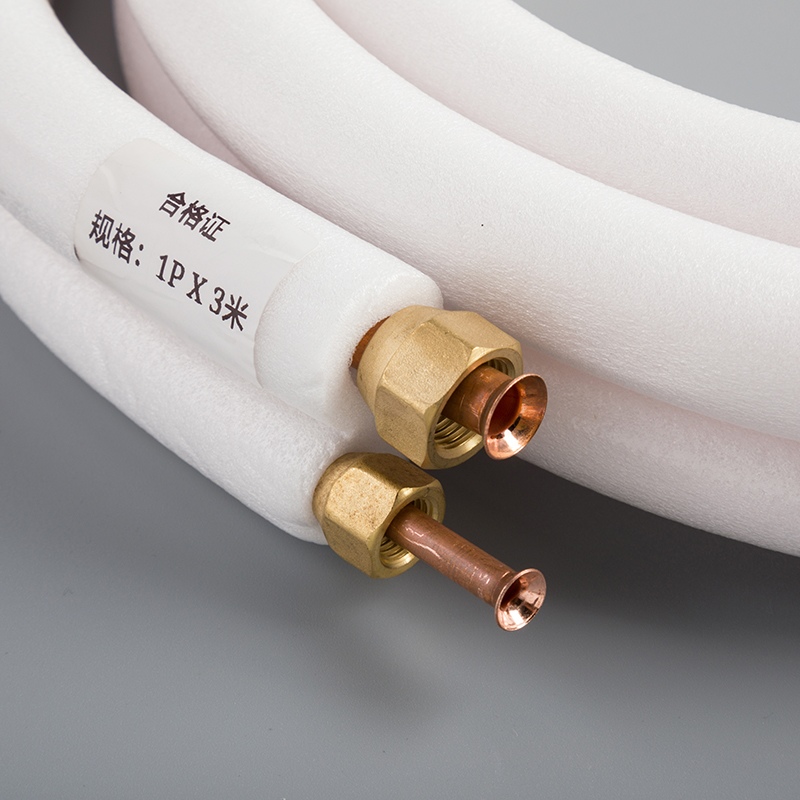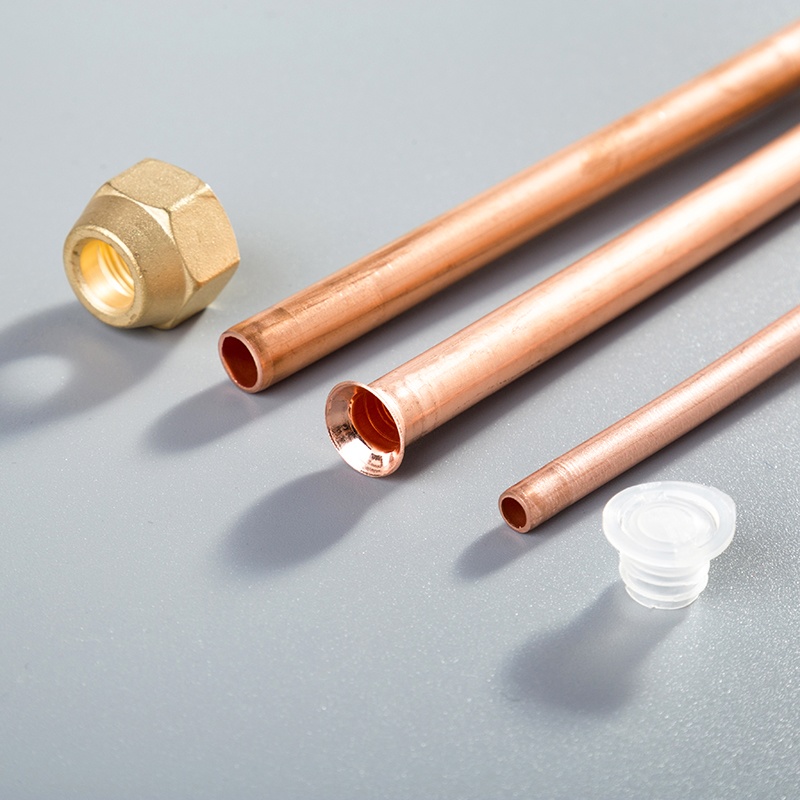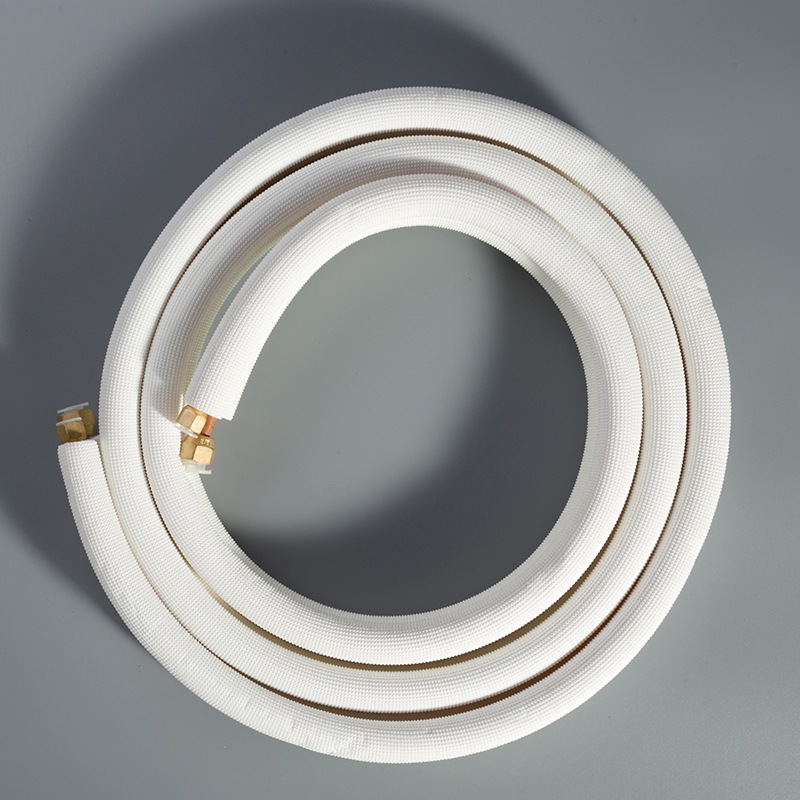Top Tips for Maintaining Copper Pipes in AC Systems

Tips for Maintaining Copper Pipes in Air Conditioning Systems
Maintaining Copper Pipes in Air Conditioning Systems ensures optimal performance and longevity of HVAC systems. Copper pipes play a crucial role due to their high thermal conductivity and corrosion resistance. Well-maintained copper pipes enhance energy efficiency, reduce the risk of leaks, and improve overall system reliability. Proper care of these pipes can prevent costly repairs and extend the lifespan of air conditioning units. The following sections will provide valuable insights into effective maintenance practices.
Understanding Copper Pipes in AC Systems
Types of Copper Pipes
Soft Copper Pipes
Soft copper pipes offer flexibility and ease of installation. Technicians can bend these pipes without the need for special tools. This flexibility makes soft copper pipes ideal for tight spaces and complex layouts. Soft copper pipes also provide excellent resistance to corrosion, ensuring long-term durability.
Hard Copper Pipes
Hard copper pipes, also known as rigid copper pipes, provide strength and stability. These pipes require cutting and joining using fittings. Hard copper pipes are often used in fixed installations where rigidity is essential. These pipes also offer high resistance to pressure and temperature variations, making them suitable for demanding applications.
Roles of Copper Pipes in AC Systems
Refrigerant Lines
Copper pipes serve as refrigerant lines in air conditioning systems. These lines transport refrigerants between the indoor and outdoor units. The high thermal conductivity of copper ensures efficient heat transfer. This property enhances the overall performance of the HVAC system. Copper's durability and corrosion resistance make it an ideal choice for refrigerant lines.
Water Supply Lines
In addition to refrigerant lines, copper pipes function as water supply lines in some HVAC systems. These pipes carry water to and from the air conditioning unit. The anti-corrosive properties of copper prevent oxidation and extend the lifespan of the system. Copper pipes also handle high pressure and temperature variations effectively, ensuring reliable operation.
Installation Tips for Copper Pipes

Tools Needed
Pipe Cutter
A pipe cutter is essential for cutting copper pipes to the desired length. This tool ensures clean and precise cuts, which are crucial for proper fitting and sealing. Using a pipe cutter minimizes the risk of damaging the pipe, maintaining its integrity and functionality.
Flaring Tool
A flaring tool is necessary for creating flares at the ends of copper pipes. Flares allow secure connections with fittings, preventing leaks. The flaring tool ensures uniform and smooth flares, enhancing the reliability of the connections.
Step-by-Step Installation Guide
Measuring and Cutting
Measure the Pipe: Use a measuring tape to determine the required length of the copper pipe. Mark the measurement with a marker.
Cut the Pipe: Place the pipe cutter on the marked spot. Rotate the cutter around the pipe, tightening it gradually until the pipe is cut through. Ensure the cut is clean and even.
Flaring and Connecting
Prepare the Pipe End: Deburr the cut end of the pipe using a deburring tool. This step removes any sharp edges and ensures a smooth surface for flaring.
Create the Flare: Insert the pipe end into the flaring tool. Tighten the tool to create a flare at the pipe end. Ensure the flare is even and smooth.
Connect the Pipe: Align the flared end with the fitting. Secure the connection by tightening the fitting nut. Ensure the connection is tight to prevent leaks.
Proper installation of copper pipes involves using the right tools and following precise steps. These practices ensure secure and reliable connections, enhancing the performance and longevity of air conditioning systems.
Maintenance Tips for Copper Pipes

Regular Inspection
Checking for Leaks
Maintaining Copper Pipes in Air Conditioning Systems involves regular inspections to check for leaks. Leaks can lead to reduced efficiency and increased energy consumption. Technicians should visually inspect the pipes for any signs of moisture or dripping. A common method includes using a soap solution to detect bubbles forming at leak points. Promptly addressing leaks prevents further damage and maintains system efficiency.
Inspecting for Corrosion
Corrosion can compromise the integrity of copper pipes. Regular inspections help identify early signs of corrosion, such as discoloration or greenish deposits. Maintaining Copper Pipes in Air Conditioning Systems requires technicians to examine joints and connections closely. Applying anti-corrosive treatments can extend the lifespan of the pipes. Early detection and treatment of corrosion ensure reliable operation.
Cleaning Methods
Using Vinegar Solution
Cleaning copper pipes with a vinegar solution is an effective method. Vinegar, a natural acid, helps dissolve mineral deposits and grime. To clean the pipes, mix equal parts of vinegar and water. Soak a cloth in the solution and wipe the pipes thoroughly. Rinse with clean water to remove any residue. Maintaining Copper Pipes in Air Conditioning Systems with vinegar ensures cleanliness without damaging the pipes.
Using Commercial Cleaners
Commercial cleaners offer another option for cleaning copper pipes. These cleaners are specifically formulated to remove tough stains and deposits. Follow the manufacturer's instructions for the best results. Apply the cleaner to the pipes and scrub gently with a soft brush. Rinse thoroughly to ensure no cleaner residue remains. Maintaining Copper Pipes in Air Conditioning Systems with commercial cleaners provides a thorough and efficient cleaning process.
Troubleshooting Common Issues
Identifying Problems
Low Refrigerant Levels
Low refrigerant levels can significantly impact the performance of an air conditioning system. Copper pipes play a crucial role in transporting refrigerants. A drop in refrigerant levels often indicates a leak in the copper pipes. Technicians should use specialized tools to measure the refrigerant pressure. A significant drop in pressure usually confirms the presence of a leak. Prompt identification and repair of leaks prevent further damage to the system.
Water Leaks
Water leaks in air conditioning systems often stem from issues with copper pipes. Corrosion or physical damage can cause these leaks. Technicians should visually inspect the pipes for signs of moisture or dripping. Using a soap solution can help detect bubbles forming at leak points. Addressing water leaks quickly maintains system efficiency and prevents water damage to surrounding areas.
Solutions and Repairs
Sealing Leaks
Sealing leaks in copper pipes requires precision and the right materials. Technicians should first identify the exact location of the leak. Cleaning the area around the leak ensures proper adhesion of the sealant. Applying a high-quality epoxy or a specialized pipe sealant can effectively seal small leaks. For larger leaks, using a pipe repair clamp provides a temporary fix until a permanent solution is implemented.
Replacing Damaged Sections
Replacing damaged sections of copper pipes involves several steps. Technicians should first turn off the air conditioning system to ensure safety. Using a pipe cutter, they should remove the damaged section of the pipe. Measuring and cutting a new piece of copper pipe to the required length ensures a proper fit. Flaring the ends of the new pipe and connecting it to the existing system with fittings completes the replacement process. Ensuring tight connections prevents future leaks and maintains system integrity.
Expert Testimony:
"Copper pipes are widely used for water supply and distribution systems. Their excellent corrosion resistance ensures the water remains clean and safe for consumption." - Unknown Expert in Copper Piping in AC Systems
Proper troubleshooting and repair of common issues in copper pipes enhance the efficiency and longevity of air conditioning systems. Regular maintenance and prompt repairs ensure reliable operation and prevent costly damage.
Maintaining Copper Pipes in Air Conditioning Systems ensures optimal performance and longevity. Regular inspections and proper cleaning methods prevent leaks and corrosion. Following the provided tips enhances system efficiency and reliability. Well-maintained AC systems offer energy savings, reduced repair costs, and extended lifespan. Industry professionals recommend copper pipes for their durability and thermal conductivity. Adopting these practices will lead to a more sustainable and efficient HVAC system.
See Also
Essential Maintenance Tips for Copper Coil Piping
Comprehensive Copper Pipe Efficiency Maintenance Guide
Discovering the Key Benefits of Copper Pipes in AC


